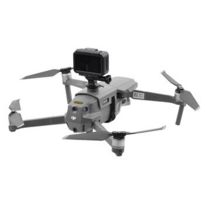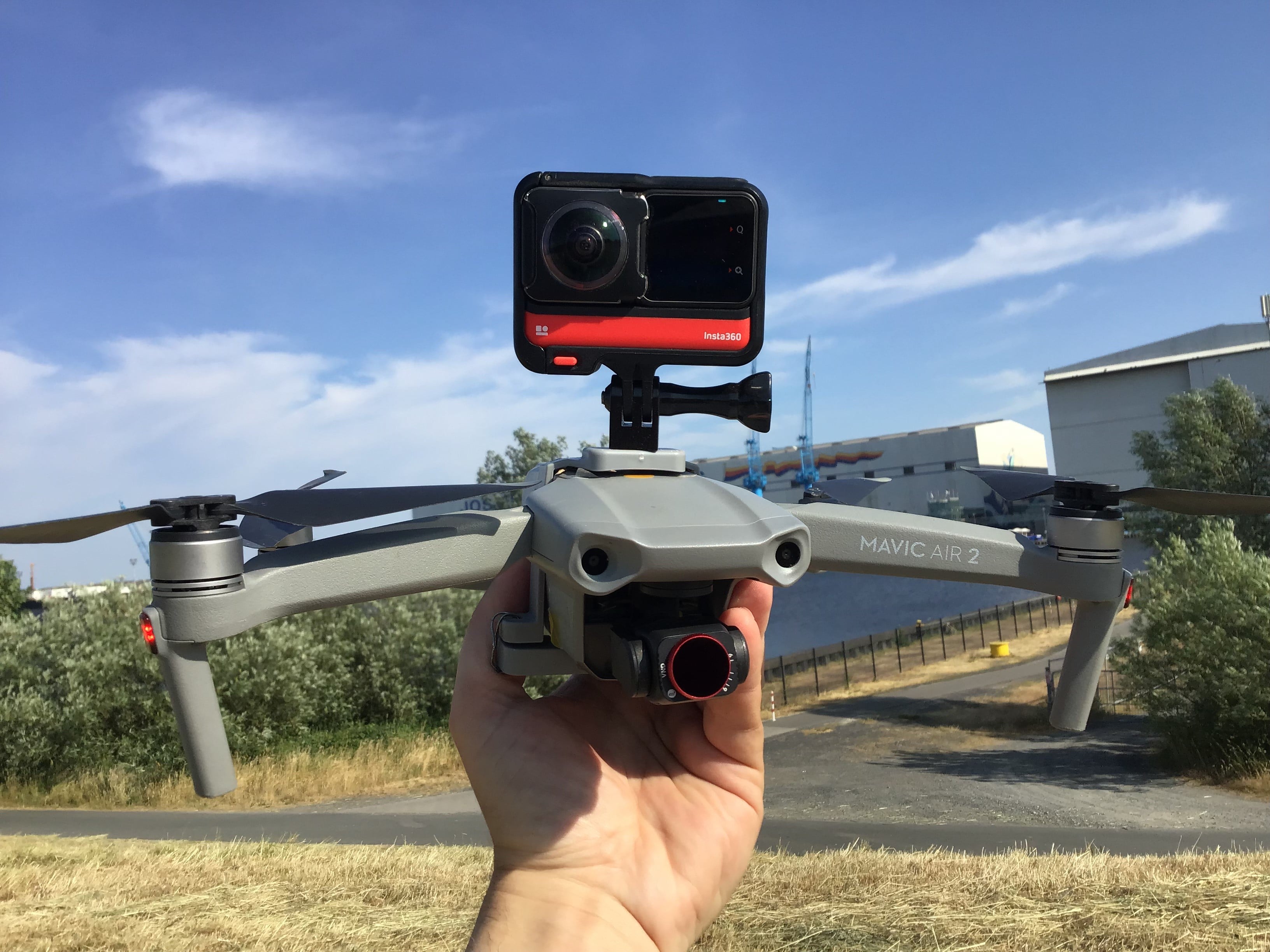Drone technology has revolutionized the way we capture breathtaking aerial footage, offering us a fresh perspective on the world. As a passionate user of a DJI Mavic Air 2 and an Insta360 ONE R/S action camera, it was finally only a matter of time before I wondered what could be achieved with both devices combined.
In this blog post, I will present you my intended goals as well as my lessons learned from using the DJI Mavic Air 2 with the Insta360 ONE R/S 360° action camera.
What did I want achive by combining the DJI Mavic Air 2 and my Insta360 action cam?
Immersive 360-Degree Footage: My assumption was that combining the DJI Mavic Air 2 with a 360-degree action camera would unlock a world of immersive footage. You should be able to capture stunning panoramas, expand your field of view, and provide viewers with a unique perspective that traditional cameras can't replicate.
Dynamic and Interactive Shots: Another assumption was that with the ability to capture footage from all angles and heights, a 360-degree action camera would enable you to create dynamic shots that are engaging and interactive. At best, viewers could then explore the footage in virtual reality (VR).
Flexibility and Post-Processing Potential: Last but not least, I had high hopes regarding flexible postprocessing. I thought, using an external 360-degree action camera would allow for flexibility in terms of camera placement. You can mount it on the drone's body, under the drone, or on a separate gimbal, offering endless possibilities for capturing creative shots. Additionally, the footage from a 360-degree camera provides ample room for post-processing and editing, enabling you to enhance the content to your liking.
So, it was time to fulfill my wishes and goals. First, I had to find the perfect mounting device for my action camera, and fortunately, I stumbled upon several options:
action cam holder Option 1
action cam holder Option 2
action cam holder Option 3
Given the circumstances, it became clear that placing the camera on top of the drone was a more sensible choice than mounting it underneath. The limited space available underneath simply wouldn't accommodate the camera properly. Since I somehow must have lost the bolts, I used a wire instead to attach the camera mount.
Despite my initial enthusiasm, I soon encountered a series of challenges as I began to put my plans into action.
The problems encountered:
GPS Disruption and ATTI Mode: One of the key challenges when using the Insta360 ONE R/S action camera with the DJI Mavic Air 2 was the disruption of GPS signals. Mounting an external camera may obstruct the drone's GPS antenna, leading to a loss of satellite connection. As a result, the drone switched to ATTI (attitude) mode, which relies solely on its internal sensors for stability. This can affect the drone's flight performance, making it less responsive to external factors like wind, and potentially increasing the risk of accidents.
Weight and Flight Time: For obvious reasons, there was a significant increase in the overall weight of the drone right from the start. Unfortunately, surpassing the recommended weight limits had a noticeable impact on the drone's flight performance. Its once nimble maneuverability was compromised, and even the battery life suffered as a result. It became evident that careful consideration of weight distribution and its effect on flight time was crucial when utilizing the action camera alongside the drone.
Image Stabilization and Quality: While the DJI Mavic Air 2 itself boasts exceptional image stabilization capabilities, the stabilization quality may vary when using an external action camera. The performance of the 360-degree camera's stabilization system may not be on par with the drone's built-in gimbal, leading to less stable footage. Additionally, the image quality and resolution of the action camera might not match the Mavic Air 2's capabilities, potentially resulting in a noticeable discrepancy in footage quality.
Conclusion
Combining the DJI Mavic Air 2 with a 360-degree action camera may open up exciting possibilities for aerial photography and videography. With good ideas and professional handling, you can create immersive footage and unique perspectives. However, it's important to be aware of the potential problems that arise, such as GPS disruption, flight performance issues, and potential compromises in image stabilization and quality. By carefully considering these factors and finding the right balance in your setup, you can maximize the benefits and overcome the challenges, creating captivating content that stands out from the crowd.
You should also be aware that there are alternative and more optimal ways to combine the DJI Mavic Air with an action camera. For instance, while the Insta360 One R/S may be heavy, a better option would be to use the lightweight the Insta360 X3 or the Insta30 GO3. However, if you're aiming to take aerial filming to the highest level, the recommended choice would be the Insta360 Sphere. By selecting the right camera for your setup, you can ensure a smoother and more efficient integration with the Mavic Air, ultimately enhancing your overall aerial filming experience.
Dive into my latest YouTube video where I tried to push the limits of creativity by merging the DJI Mavic Air 2 and the Insta360 Action Cam with a 360° lens.
If you have any ideas or hints for better results, feel free to contact to me!




Comments (0)
No comments found!